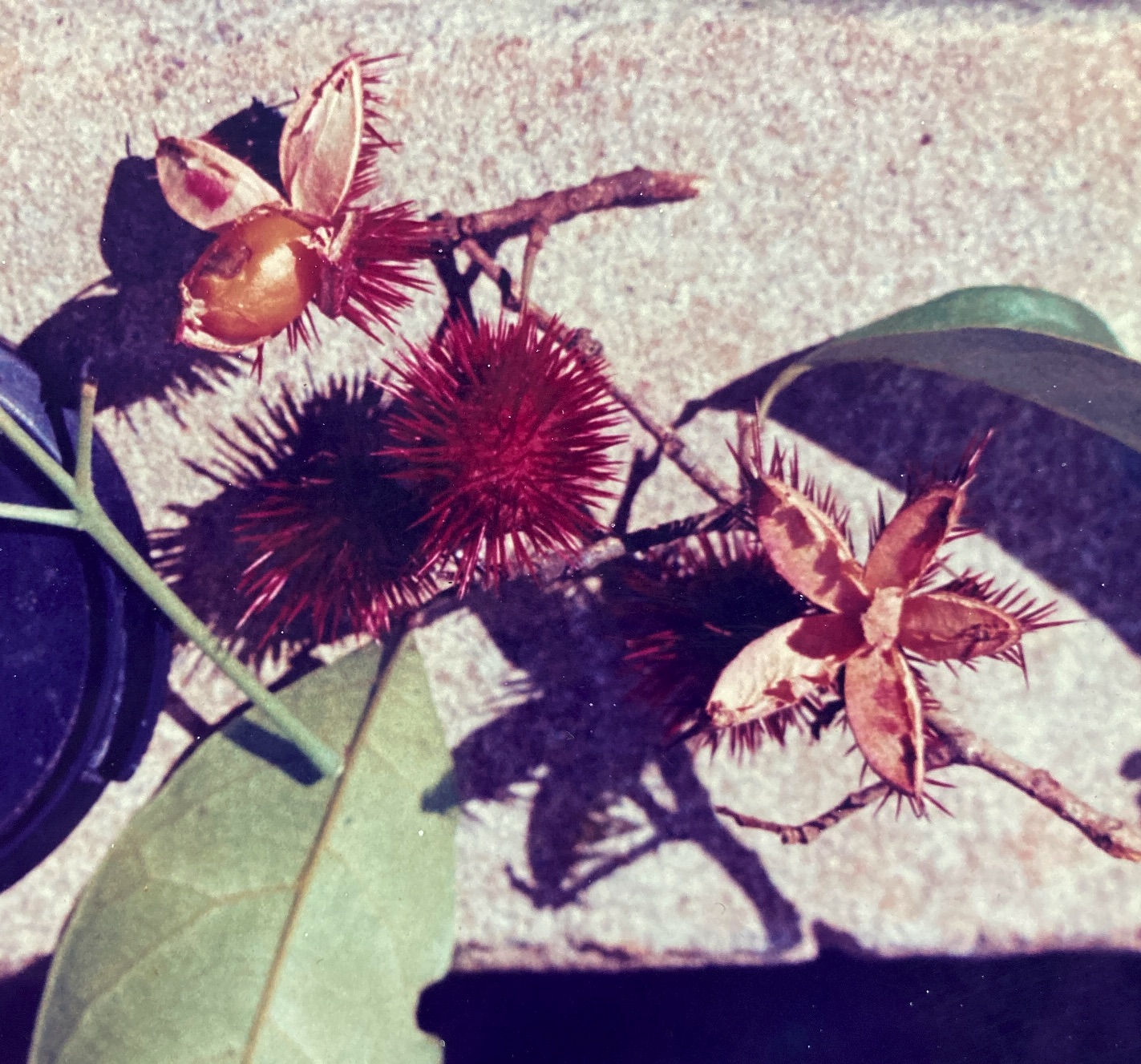Sloanea picapica Standley
Elaeocarpaceae IRA ROSA
Tree: Uncommon, emergent (30-40m) evergreen tree of immense proportions found amid the wet and hot lowland forests of Costa Rica’s southwestern Pacific Coast. Seeming to prefer water-saturated soils with poor drainage, this tree is often found near or beside small streams. “Ira Rosa”, the tree’s colorful common name, derives from it’s burgundy capsules. These dehisce into attractive roseate shapes but are covered with protective coatings of extremely sharp, piercing spines. Sloanea is also notable for its towering buttresses and white seeds with bright orange arils.
Description: When mature, the Sloanea trunk is stout and very irregular. Accenting its imposingly large stature, high (1.5-2 m), thick, and wall-like buttress roots protrude from its base and extend away in all directions. Branching occurs only along the upper third of the bole and the crown produced by them is thick, vividly green, and finely textured – though often haphazardly shaped. Bole bark is light gray or off-white and scaly in appearance while that of the thin twigs is brown with white lenticels. Ira Rosa leaves (8 cm by 3.5 cm) are simple, alternate, smooth and small. Shed and re-grown in May and June, the forest floor may be covered with them during this time. They are of variable and often asymmetric form, thought generally elliptical and with slowly narrowing (caudate) apices.
The small (4 mm), yellow, petalless flowers occur in axillar clusters. Each is dominated by a tight, brush-like bunch of yellow stamens that protrude from a basal disk and that surround a longer green pistil. After blossoming, these stamens are shed and the flower ovary begins to expand rapidly into the characteristic spiny pod. Flowering periods are short and their annual timing is inconsistent. Typically spanning a two-week period, flowering occurs sometime from October to January. As previously mentioned, the fruits (2.5 cm) are rigid, woody capsules covered by sharp spines. Ripening as they change from green to a striking violet/maroon color, they dry high in the canopy and split into 4 or 5 irregular, petal-like sections. Inside, a seed, cloaked in a bright orange aril, is exposed. It remains attached to one of the opened sections of the capsule until it is foraged by a small mammal or bird. Each fruit contains a single white seed protected only by a thin, papery seed coat. This unprotected seed germinates immediately upon reaching the forest floor: an event that is appropriately timed to correspond with the beginning of the rainy season. Harvest lasts from late February though April.
Similar Species: The immense size of mature Sloanea specimens, coupled with their extremely wide and buttressed bases and relatively small leaves, make this species unlikely to cause confusion. Pradosia atroviolaceae, a tree of similar size that also sports well-developed buttresses, has much larger and longer leaves as well as a more open and airy crown. If in doubt about the identity of a sterile Sloanea tree, it often helps to search the ground for old seed pods. Being of woody and durable construction, they persist in the leaf litter of the forest floor for many months – if not years – after harvests.
Natural History: Squirrel and white-faced monkeys in Manuel Antonio, spider monkeys elsewhere (Allen, 1956), and birds appear to be the primary dispersers of Ira Rosa seeds. Under ideal circumstances, these animals feed on the showy and nutritious orange arils and later drop the seeds at sites distant from the parent trees. The spines that cover the capsules probably serve to protect the immature fruits at a time when foraging by animals would destroy them. As is relatively common among tropical forest trees, Sloanea does not produce fruit crops on an annual basis. Instead, large harvests appear to occur every other year, with all individuals of the same species synchronized in this regard.
Uses: Allen (1956) indicates that the seeds are edible and sweet. He also writes that the wood is dark brown and hard, and that it resists rotting even when in contact with the soil or with water.
Distribution: In Manuel Antonio National Park, the few representatives of this species are known from the low, wet soils lying along the Perezoso (ANEP) trail. Elsewhere in this country, it has been observed have in the Osa Peninsula as well as in Punta Leona. Sloanea ranges from eastern Honduras to Costa Rica.



